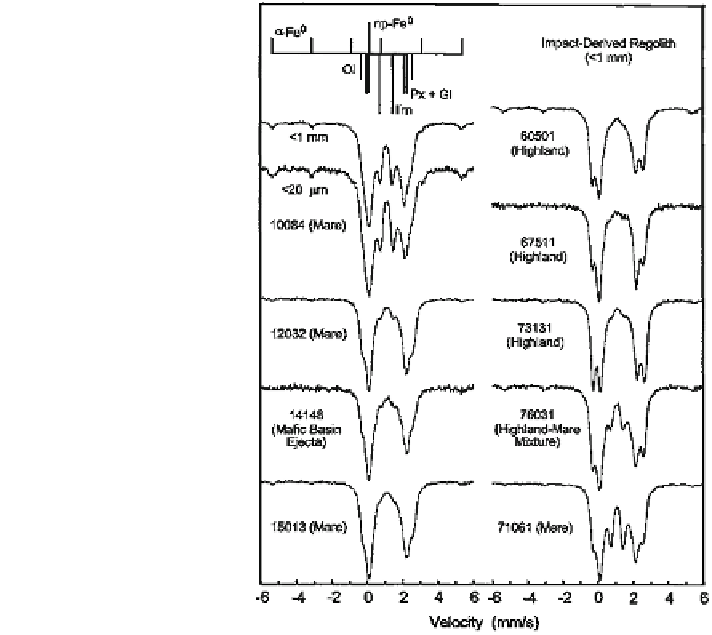Chemistry Reference
In-Depth Information
Fig. 3.52 RT spectra for
impact-derived regolith
samples at different lunar
locations. Peak positions for
the individual phases are
indicated by the stick diagram
(after Morris et al. [
291
])
lunar missions between 1969 and 1972 almost 400 kg of material have been
brought to earth. Also, the Russian Luna program succeeded in 1970 in returning
lunar samples to the Earth. All those regolith samples have been investigated by
MS, showing the spectra of Fe-bearing phases, such as olivine, glass, pyroxene,
ilmenite, triolite, iron metal and Fe-Ni alloys [
287
-
291
]. Figure
3.52
shows a
collection of RT spectra of impact-derived regolith samples, i.e. surface dust less
than 1 mm depth, collected at different lunar locations, illustrating ilmenite and
pyroxene to be the dominant crystalline phases in mare samples, whereas pyroxene
and olivine are the dominant crystalline phases in highland samples.
Two Mars exploration rovers (MER) both equipped with a miniaturized
Mössbauer spectrometer (MIMOS), developed by Gustar Klingelhöfer and
coworkers [
292
,
293
], were launched in 2003. The first Mössbauer spectrum was
transmitted to Earth in January 2004 and was undoubtedly the most exciting event
for every Mössbauer spectroscopist. Since then both spectrometers have collected
more than thousand spectra during 5 years. The spectrometer on the Opportunity
(MER-B) is still operating in 2011, although the collecting time has increased
considerably due to the weak source, whereas since March 2010 the other rover,
the Spirit (MER-A), is not responding anymore.

